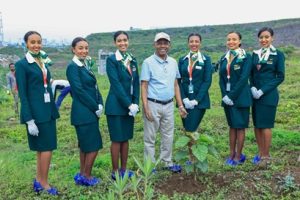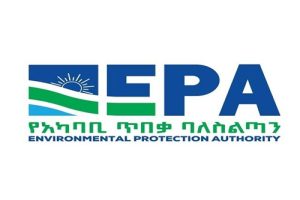
BY SOLOMON YIRDAW
If you call Ethiopia the “water tower of Africa,” Guna Mountain community reserved place, the source of 41 rivers and 77 springs, is one of the five highest angel lands in the world. Gashaw Eshetu, the Amhara National Regional State Environment and Forest Protection Office public relations head, stated that the strict area has been established by the State Council declaration number 180/2008 and is being protected and taken care of.
This community-reserve site, which spans over 4000 hectares and borders 11 kebeles in Gunabegemdr, Farta, and Este woredas in South Gondar Zone, is home to more than 41 species of mammals, 143 species of birds, more than 96 plant species, and numerous biodiversity resources.
Gashaw, stated that it is a community-reserved site; however, he explained that due to the increasing illegality in the area, it is not being protected and developed as it should be “It is therefore necessary to work with the community in the area so that the area can get out of the problem of survival and be properly maintained and developed to become a source of tourism.” “For this, we are working in collaboration with the relevant stakeholders,” he said.
PGashaw told us that due to the anarchy that occurred in the area, it was suffering great damage and the diversity of life in it was becoming less and less. There are many problems at the community-reserved site of Mount Guna, and the main one is the wrong perception that the local community will not consider the long-term benefits and will affect my temporary benefits.
He said that when the community reserve site was developed, the people lost the area that they used for grazing and farming, and the question of alternative livelihood reform is another area where the head of public relations says that the authority is carrying out many activities to solve the problems. Representatives from the local community, the South Gondar zone governor, the head of the Prosperity Party office, religious leaders, leaders of the four woredas, and 11 kebele leaders met with scholars from Debretabor, Gondar, and Bahirdar universities on January 18/2015 in Debretabor. Simultaneously, there are brief discussions with the local community. Gashaw explains that this is being done to remind the community that when the area is developed sustainably, the community will benefit from the tourists who come to visit the area.
Furthermore, the authority has budgeted over 1.5 million Birr per year to protect the Guna Mountain community site by employing 64 permanent and temporary scouts and guards. They informed us that the authority is constantly raising awareness in order to reassure the community about the importance of sustainably reserving the site. In response to the community’s question, the head added that we should consider a livelihood option until the area begins to earn money from tourists.
Because the people are involved in a lot of animal breeding activities, when the area is fenced off, the investors must open a fodder processing factory in the area, and both the people and the investors can use it. Concerned stakeholders from the woreda to the regional level must contribute, and people can sell the products they are currently producing and benefit from infrastructure such as road, lights, clean drinking water, and various organizations such as cooperatives and unions. The Forest Protection Authority stated that it will improve the effectiveness of the activities being carried out to develop and protect the Guna Mount Community Area in a sustainable manner.
Finally, Mount Guna is a 4000-hectare community reserve that feeds Lake Tana, Africa’s second-largest lake, and the Nile basin. The head urged scholars in the field, including those at higher education institutions, to do their part by raising community awareness in the area to protect and develop the community reserved area, expanding basic alternative methods of living, and conducting research and research activities useful for the community reserved site.
It is known that the Amhara region has 13 community protected areas and national parks, 11 of which are managed by the Amhara regional government and two by the federal government.
THE ETHIOPIAN HERALD WEDNESDAY 15 FEBRUARY 2023




